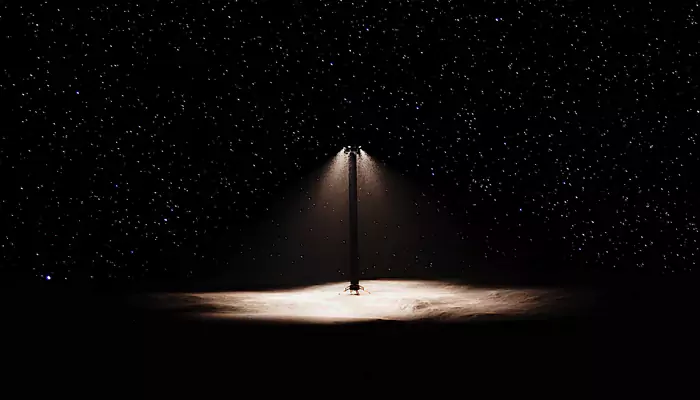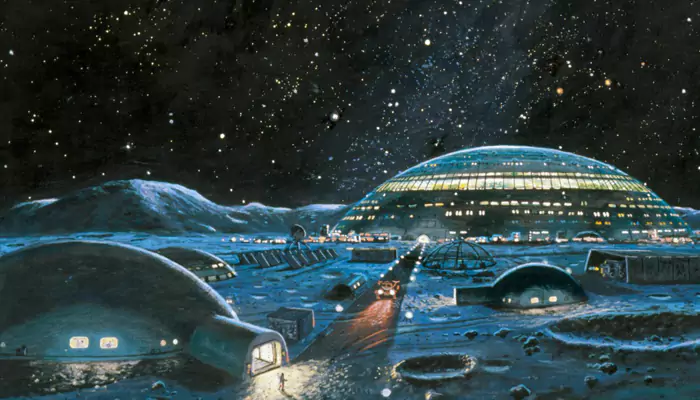
Moon could soon become humanity's first extraterrestrial alternate habitable area if everything goes well!
To discover an alternate habitat in space scientists have been making drastic yet game-changing decisions. One recent example for that is installing streetlights on lunar surface. Why this step? Will it really help? Let's find out.
Streetlights are the most important thing to travel in dark nights. Soon, scientists will build some of them on our own satellite, Moon.
The Need for Lunar Streetlights: The moon doesn't have any thick atmosphere like earth. The Moon comprises a thin and tenuous yet persistent blanket of different gases. Thin lunar atmosphere doesn't support collision between atoms to form own atmosphere around the Moon.

First human landing on the Moon
Credit - @NASA X handle
As a result, the daytime lunar temperatures remains around 110 degrees Celsius, while the nighttime temperature reaches minus 173 degrees Celsius often. Meanwhile, one lunar day is equivalent to 14 Earth days and nights are no shorter.
These long and dark nights have many times proved disastrous for lunar landings. As space agencies are planning for extensive manned moon missions starting this decade, it's highly important to land and survive in such harsh conditions.
The Plan: The space technology company named Honeybee Robotics (associated with Jeff Bezos' Blue Origin) has proposed a unique solution to survive this situation. It's installation of lunar streetlamps powered by sunlight.

Credit - @ DrFringe X handle
The original idea may sound unrealistic, but the Lunar Utility Navigation with Advanced Remote Sensing and Autonomous Beaming for Energy Redistribution, or LUNARSABER project has already received funding from the U.S. government's Defense Advanced Research Projects Agency (DARPA) to initiate advanced lunar exploration approaches.
Vishnu Sanigepalli, the project's principal investigator explained; “each LUNARSABER lamp would be far taller than the ones standing on your street corner — in fact, at 330 feet (100 meters) tall, they'd be taller than the Statue of Liberty. These massive light poles are designed to store solar energy during the lunar daytime and then light up the surrounding area with powerful floodlights during the two-week lunar night that follows.”
Have a look at the promotional video describing the plan for Lunar Streetlights.
Credit - Honeybee Robotics Ltd YouTube channel
“The lamps' high altitude is crucial not only for peering over the rims of vast lunar craters, but also for elevating up to 0.9 tons (1 metric ton) of science equipment, such as cameras and communications devices, to higher vantage points,” Sanigepalli added further.
Similar to network of lighthouses on the Earth, tge scientists are planning to build a power grid on moon surface. Sanigepalli shared the ambitious plan: “The base of each tower would be equipped with power adapters to help recharge lunar rovers or other hypothetical moon infrastructure that were nearby. If several LUNARSABER towers can be deployed to different parts of the lunar surface, this network of lighthouses could serve as the moon's first power grid.”

An artist's imagination of lunar power grid
Credit - @Cosmozonaweb X handle
Undeniably, installation of those structures on the lunar poses various challenges. To combat them, engineers at the Honeybee Robotics have developed an “automated system” by which each “LUNARSABER tower could effectively rise out of its own base, by bending rolled-up bands of metal into towering cylindrical tubes.” This means, the actual tower is already rolled up inside and it will be unfolded post installation.
From building train system to innovative nuclear reactors, scientists have been planning to exploit the lunar surface in many ways. However, the first and foremost requirement is sufficient light. Currently, this moon streetlight project is in its infancy. If this come to fruition, it will be a remarkable achievement for humanity’s future.